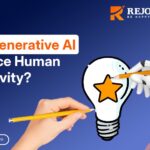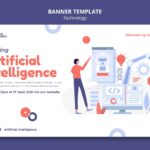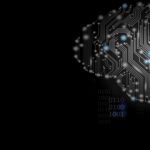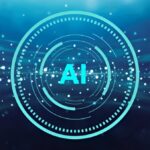Artificial Intelligence (AI) is transforming industries, changing the way we work, and slowly integrating itself into our daily routines. From the voice assistants in our phones to predictive algorithms in healthcare, AI is more than a buzzword—it’s a rapidly evolving field that’s shaping the future.
In this blog, we’ll explore what AI really is, how it works, why it’s important, and where it might be headed. If you’re curious about AI and want a clear, down-to-earth explanation, you’re in the right place.
What Is AI, Really?
Artificial Intelligence refers to machines that can perform tasks that would typically require human intelligence. These tasks include:
-
Understanding language
-
Recognizing images or patterns
-
Learning from experience
-
Making decisions
AI systems are built using algorithms—sets of rules or instructions given to computers to help them learn patterns or behaviors from data.
There are two main types of AI:
Narrow AI
This type of AI is designed for a specific task. For example, a recommendation engine that suggests movies on your streaming platform is a narrow AI system. It can’t do anything else outside of that task.
General AI
General AI (which we haven’t achieved yet) would be capable of understanding, learning, and applying knowledge across a wide range of tasks—similar to how a human can.
Most of what we call “AI” today falls under the narrow category, but even that has powerful implications for many industries.
How AI Works: The Basics
AI systems learn and operate based on data. The more data they get, the better they can perform. Here are the core components that drive AI:
Machine Learning (ML)
Machine Learning is a subset of AI. It allows systems to learn and improve from experience without being explicitly programmed for every single task. Instead of following static rules, ML models identify patterns and make predictions.
-
Supervised learning: Trained on labeled data. Example: Email spam filters.
-
Unsupervised learning: Finds hidden patterns in data. Example: Customer segmentation.
-
Reinforcement learning: Learns through trial and error. Example: Game-playing bots like AlphaGo.
Neural Networks
Inspired by the structure of the human brain, neural networks are algorithms made up of layers. These networks are great at recognizing patterns and are used in image recognition, speech processing, and more.
Natural Language Processing (NLP)
This branch focuses on enabling machines to understand and respond to human language. Common examples include:
-
Chatbots
-
Translation tools
-
Voice assistants like Alexa or Siri
These technologies rely heavily on massive amounts of text data and sophisticated algorithms to process language meaningfully.
Real-World Applications of AI
AI is already behind many services and tools we use daily. Its practical uses are growing fast, and some may surprise you. Here’s a look at where AI is making a difference:
Healthcare
AI helps doctors detect diseases earlier and with more accuracy. Machine learning models can identify cancer cells in scans or predict patient outcomes based on historical data.
Transportation
Self-driving cars rely on AI for navigation, object detection, and decision-making. While fully autonomous vehicles aren’t widespread yet, features like lane assist and adaptive cruise control are AI-powered.
Customer Service
AI chatbots handle customer queries 24/7, reducing wait times and improving response consistency. They’re widely used in banking, e-commerce, and support centers.
Finance
AI is used in fraud detection, credit scoring, and algorithmic trading. It can analyze massive datasets quickly, flagging unusual behavior in real-time.
Entertainment
From music recommendations on Spotify to video suggestions on YouTube, AI personalizes content for users, increasing engagement.
Even consumer products like mr fog vape flavors use AI-driven supply chain or recommendation tools to better match user preferences.
Why AI Matters (and What Comes Next)
Understanding the growing role of AI is important—not just for tech professionals but for everyone. Here’s why:
Economic Impact
AI will transform the job market. While it will automate some tasks, it will also create new roles that didn’t exist before. Adaptability and learning new skills will be key for future job security.
Ethical and Social Questions
With great power comes great responsibility. AI raises valid concerns about:
-
Privacy
-
Algorithmic bias
-
Surveillance
-
Misinformation
It’s important for both developers and society to think critically about how AI is developed and used.
Future Trends
The future of AI will likely include:
-
More explainable AI (so we understand how decisions are made)
-
Stronger data privacy controls
-
AI in education and personalized learning
-
Wider use in smart homes and cities
These changes aren’t happening overnight, but progress is steady. Understanding AI helps you stay ahead of the curve.
Final Thoughts
AI is not magic—it’s a set of tools and systems created by humans to do specific tasks. Its progress is rapid, and its impact is already visible in everyday life. Whether you’re a student, a business owner, or just curious, getting familiar with AI is becoming essential.
We’re only scratching the surface of what’s possible. As these tools become more integrated into our daily lives, the need for understanding, discussion, and smart regulation grows.
If you’re ever on the lookout for consumer tech products or accessories, whether it’s voice-assisted devices or even something like mr fog near me, you’ll likely find AI playing a role behind the scenes—through logistics, personalization, or customer experience.
Thanks for reading, and stay curious.
- Try New Real-World Applications of AI Tools
- Artificial Intelligence (AI) is transforming industries, changing the way we work, and slowly integrating itself into our daily routines. From the voice assistants in our phones to predictive algorithms
- ai,
Related posts:
 Can Generative AI Truly Replace Human Creativity in the Future?
Can Generative AI Truly Replace Human Creativity in the Future?
 Artificial Intelligence Development Services: What You Need to Know
Artificial Intelligence Development Services: What You Need to Know
 Global Pet Food Packaging Market Size, Trends, and Forecast to 2030
Global Pet Food Packaging Market Size, Trends, and Forecast to 2030
 Mindfulness Meets Machine: How Enlightenment AI Blends Ancient Wisdom with AI
Mindfulness Meets Machine: How Enlightenment AI Blends Ancient Wisdom with AI
 How B2B Payments Platforms are Transforming Corporate Financial Transactions
How B2B Payments Platforms are Transforming Corporate Financial Transactions
 Empowering Innovation with IDE Lab as a Service and GPU as a Service
Empowering Innovation with IDE Lab as a Service and GPU as a Service
 Water Network Management Software: How Turing Powers Smarter Infrastructure for a Thirsty World
Water Network Management Software: How Turing Powers Smarter Infrastructure for a Thirsty World
 Boosting Global Customer Engagement with Real-Time Accent Harmonizers
Boosting Global Customer Engagement with Real-Time Accent Harmonizers






